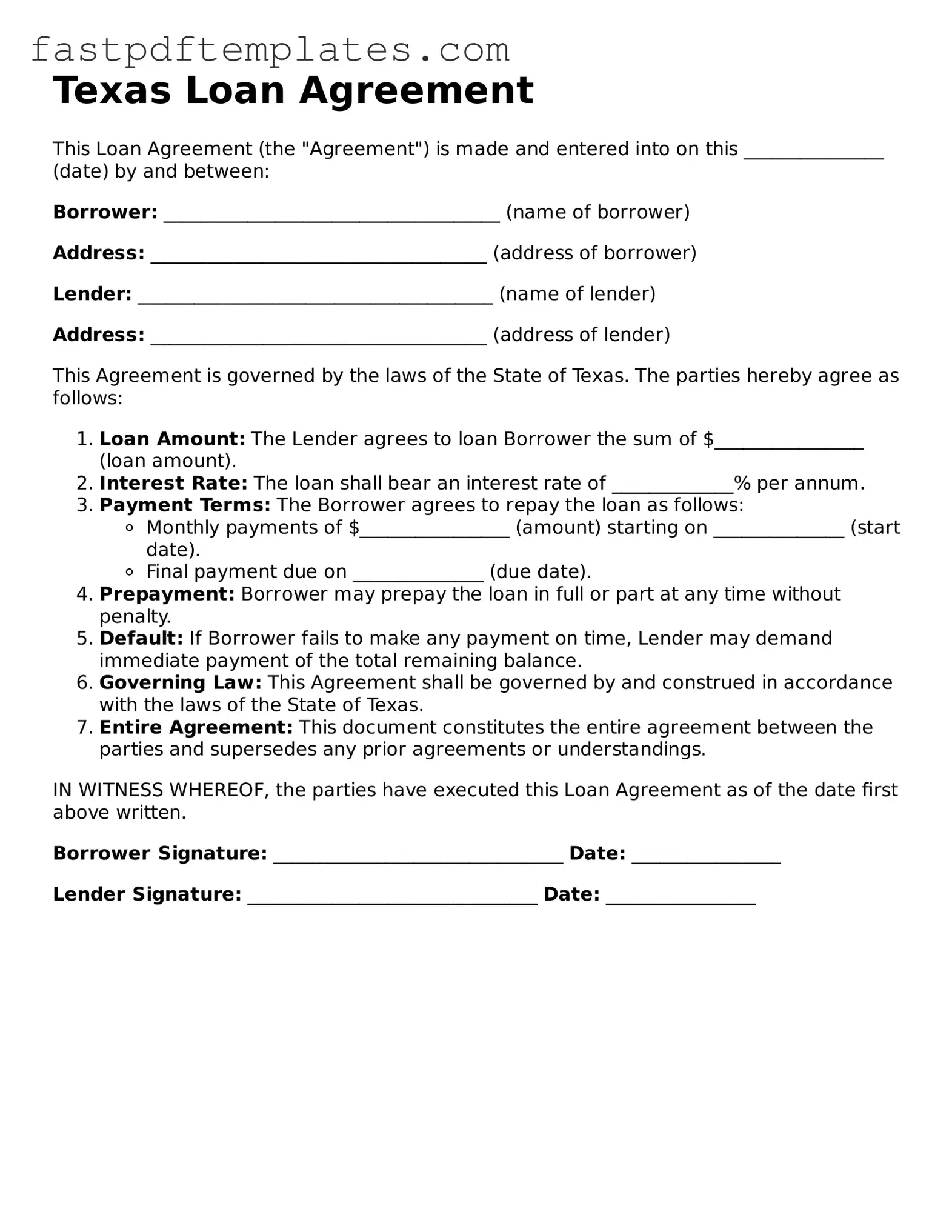The Texas Promissory Note is a document that outlines the borrower's promise to repay a specific amount of money to the lender. Like the Loan Agreement form, it includes essential details such as the loan amount, interest rate, and repayment terms. However, the Promissory Note focuses primarily on the borrower's commitment, while the Loan Agreement may also cover additional terms and conditions related to the loan, such as collateral requirements and default consequences. Both documents serve to protect the interests of the lender and establish clear expectations for the borrower.
The Texas Security Agreement is another document that shares similarities with the Loan Agreement form. This document is used when a borrower pledges collateral to secure a loan. Like the Loan Agreement, it outlines the terms of the loan and the obligations of both parties. However, the Security Agreement specifically details the collateral being offered and the lender's rights in the event of default. Together, these documents provide a comprehensive understanding of the loan and its security provisions.
The Texas Mortgage Agreement is a document that is often associated with real estate transactions. It serves as a legal contract between a borrower and a lender, detailing the terms of a loan used to purchase property. Similar to the Loan Agreement, it includes information about the loan amount, interest rate, and repayment schedule. The Mortgage Agreement, however, specifically ties the loan to the property being purchased, granting the lender a lien on the property until the loan is repaid. This adds an additional layer of security for the lender compared to a standard Loan Agreement.
The Texas Lease Agreement also bears similarities to the Loan Agreement form in that it establishes a contractual relationship between two parties. While a Lease Agreement pertains to the rental of property, it includes terms such as payment amounts, duration, and responsibilities of both the landlord and tenant. Like the Loan Agreement, it aims to protect the interests of both parties by clearly outlining expectations and obligations. However, the Lease Agreement is focused on rental arrangements rather than loans, making it a different type of financial agreement.
The Texas Installment Sale Agreement is another document that can be compared to the Loan Agreement. This agreement allows a buyer to purchase an item, such as a vehicle or equipment, through a series of installment payments. Similar to a Loan Agreement, it outlines the purchase price, payment schedule, and interest rate. However, the Installment Sale Agreement typically includes provisions regarding ownership transfer, which occurs once all payments have been made. This distinguishes it from a standard Loan Agreement, where ownership of the loaned item may not transfer until the loan is fully repaid.
